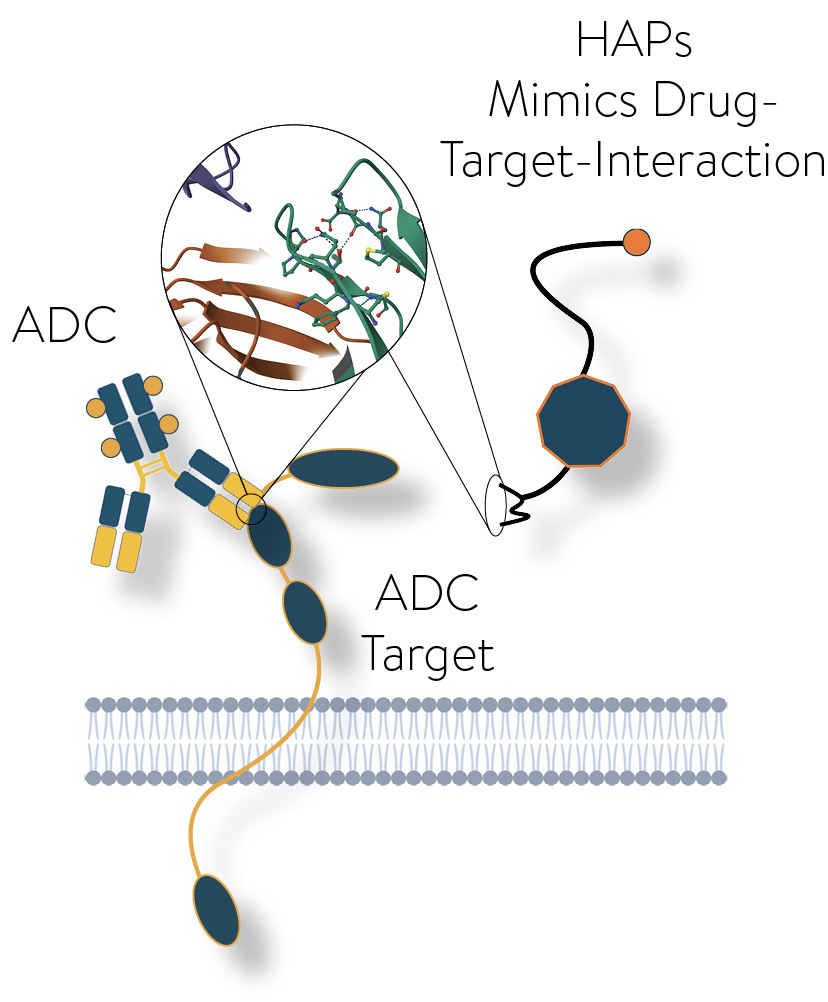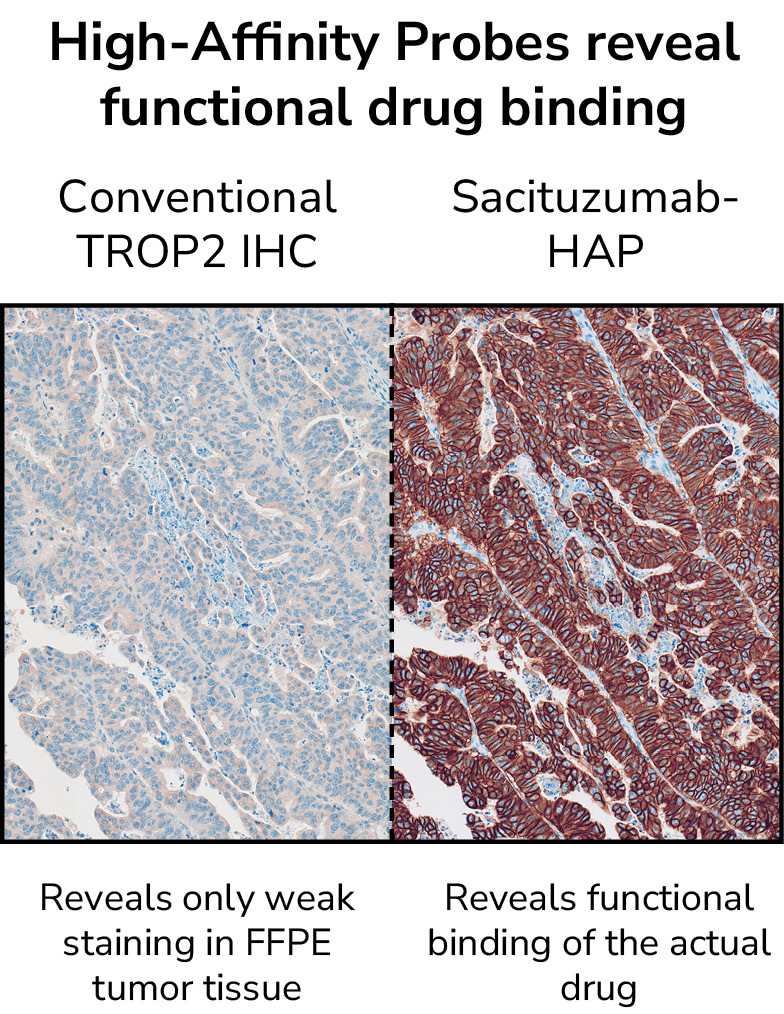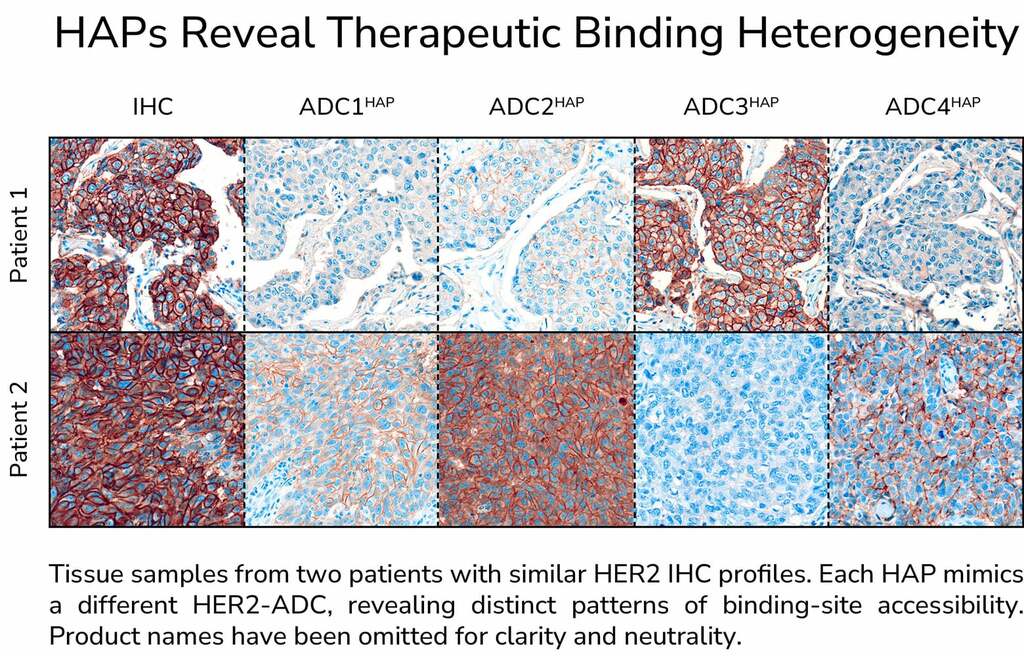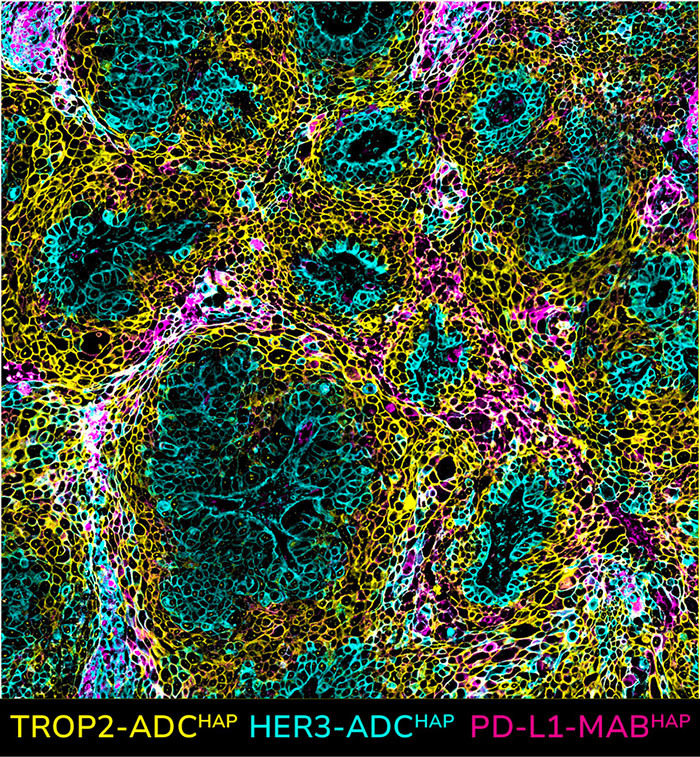
Accurate patient stratification remains one of the most pressing challenges in ADC development. At Bavarian Biotech, we’ve developed High-Affinity Probes (HAPs) that reveal whether ADCs can bind to their intended targets in tumor tissues. Unlike IHC or genetic assays, HAPs mimic the therapeutic itself, making them the only tool that can directly assess drug-target engagement in fixed patient samples. This gives ADC developers and researchers unprecedented insight into binding-site accessibility, improving target validation, patient stratification, and translational research.

Not all drugs that target the same protein will bind equally — or at all — in patient tissues. Despite being designed for the same molecular target, ADCs can show dramatically different binding profiles depending on their specific epitope, the tumor microenvironment, and structural accessibility. These differences are often invisible to conventional diagnostics like IHC, FISH, or sequencing. By mimicking therapeutic binding with high precision, HAPs provide a level of insight into drug-target engagement in tissue that is not accessible through conventional assays — offering a powerful tool for translational research and patient stratification.


High-affinity probes (HAPs) can be multiplexed to simultaneously visualize multiple ADC targets within the same tumor section. This allows researchers to map spatial binding patterns, identify distinct tumor subpopulations, and uncover co-expression or exclusivity of therapeutic targets. By revealing how different ADCs bind across the tumor landscape, HAP multiplexing enables the generation of hypotheses around combination strategies, optimal treatment sequencing, and potential mechanisms of resistance.
High-Affinity Probe (HAP) technology provides a precise and versatile platform for detecting therapeutic binding sites on tumor tissues. Our probes are engineered for high specificity and sensitivity, enabling in situ quantification of binding site accessibility and density.
HAPs integrate seamlessly into various workflows, from preclinical drug development to exploratory clinical research, supporting applications such as drug-target interaction mapping, patient stratification, and therapy exploration for challenging cases. The technology enhances precision in oncology research by delivering actionable molecular insights that drive innovation across the drug development pipeline.
For more information or to get started, please reach out to us at info@bav.bio or use the contact form below. Our team will respond promptly to assist with your inquiry and provide the information you need. We look forward to hearing from you.